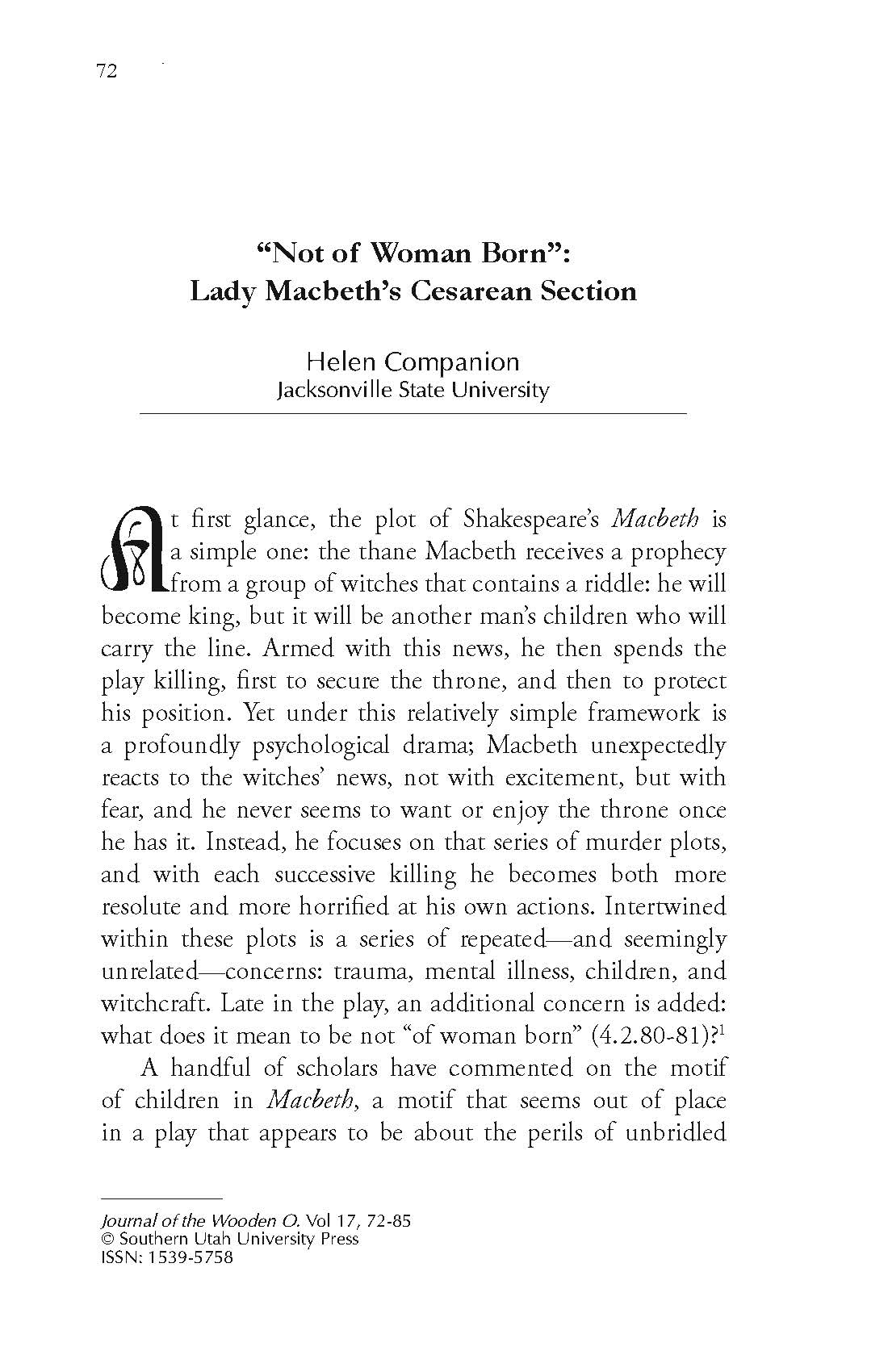“Not of Woman Born”: Lady Macbeth’s Cesarean Section
Main Article Content
Abstract
At first glance, the plot of Shakespeare’s Macbeth is a simple one: the thane Macbeth receives a prophecy from a group of witches that contains a riddle: he will become king, but it will be another man’s children who will carry the line. Armed with this news, he then spends the play killing, first to secure the throne, and then to protect his position. Yet under this relatively simple framework is a profoundly psychological drama; Macbeth unexpectedly reacts to the witches’ news, not with excitement, but with fear, and he never seems to want or enjoy the throne once he has it. Instead, he focuses on that series of murder plots, and with each successive killing he becomes both more resolute and more horrified at his own actions. Intertwined within these plots is a series of repeated—and seemingly unrelated—concerns: trauma, mental illness, children, and witchcraft. Late in the play, an additional concern is added: what does it mean to be not “of woman born” (4.2.80-81)?1
